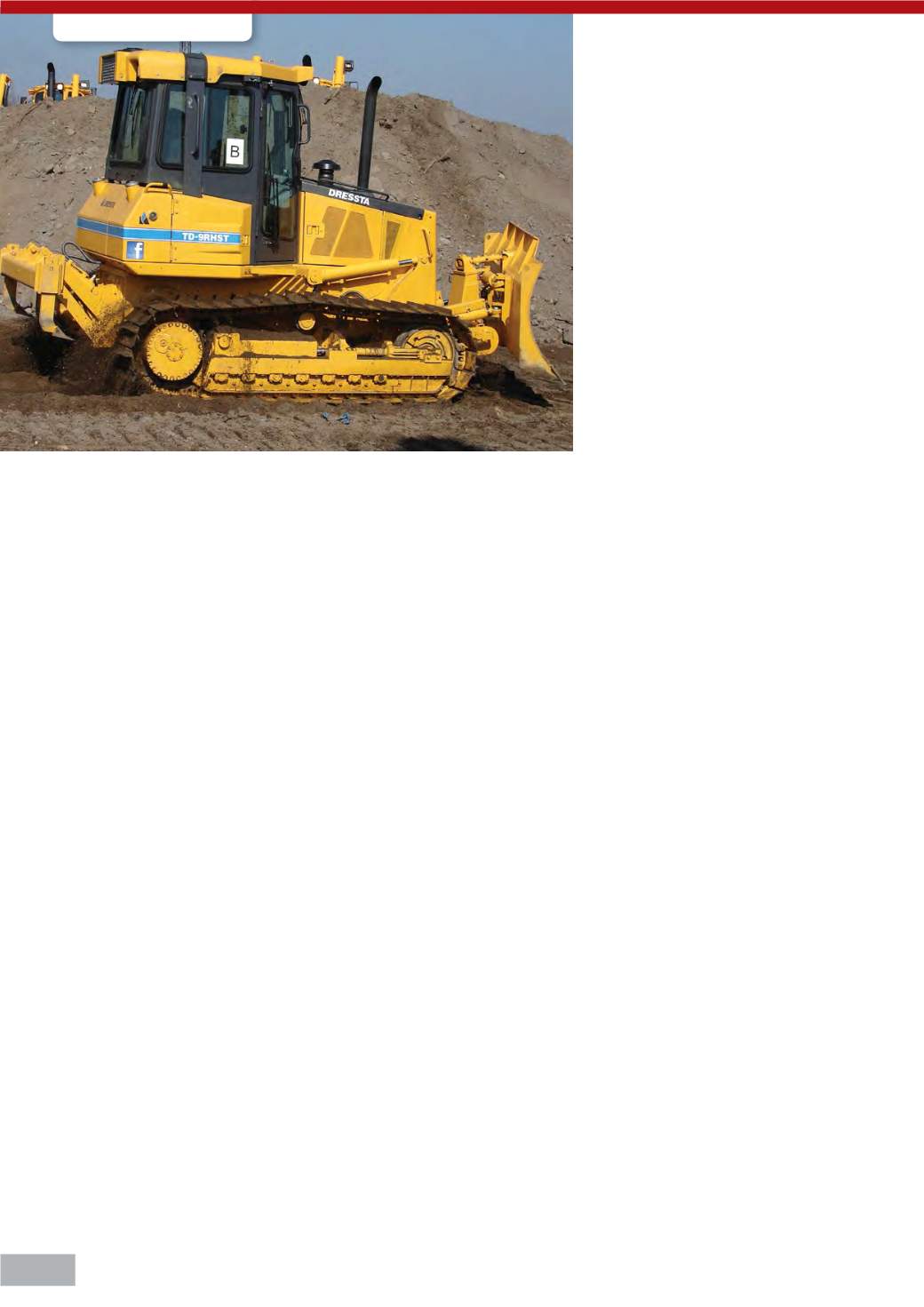

CAPITAL EQUIPMENT NEWS
MAY 2015
2
role in the development of hybrid vehicles.
Euro 6 emission standards have been imple-
mented in Europe and the emissions of any
manufacturer will need to meet these stan-
dards in order to succeed in the industry.
Thus a system of continuous environmental
research and development is an absolute
necessity for any successful manufacturer in
the commercial vehicle industry.
In order to understand where this sudden
surge for hybrids in the commercial and
industrial vehicle market came from, one
needs to take a look at the history that lies
behind these futuristic advancements.
A hybrid vehicle is generally defined as one
that uses two or more sources of power
to propel the vehicle. In a large number of
cases this means using the typical internal
combustion engine to provide the propulsion
until, in so doing, an electric motor has been
charged, which can now provide the vehicle’s
driving force. When this occurs, the internal
combustion engine is not in use, and this of
course provides major fuel savings, good for
both the environment and the wallet.
The hybrid trend started with cars and, in
recent years, found its way into commer-
cial vehicles in the form of vans and smaller
trucks (the vehicles that do the city travelling
of an operator), but it is now emerging in the
bigger segments of the truck, bus and earth-
moving markets.
Clearly, there has been a small-to-big trend
in the history of hybrid vehicles and this is
because hybrid technology, or at least suc-
cessful and viable hybrid technology, is rel-
atively new, even in cars. Cars are generally
simpler to deal with than trucks, not neces-
sarily in terms of technology, but rather in
terms of power, size, weight, functionality
and purpose. Many cars are almost ‘testing
grounds’ for new technologies, however,
commercial vehicles are not as suited to this
as passenger vehicles.
This is because given the sheer mass of
trucks and buses, if something goes wrong
with a new technology, it tends to be more
serious. More important is the fact that
downtime for a commercial vehicle operator
is not quite the same as it is for the driver of
a car. When a truck is not working, somebody
is paying for the significantly more expensive
maintenance and repairs, so it can stand on
rubber and lose the potential earnings of that
truck every day. Trucks need to be reliable,
but the delay between the first hybrid cars
and the first hybrid trucks is a good sign that
they will be.
At this relatively early stage of hybrid trucks,
much of the technology, despite variations
from manufacturer to manufacturer, is simi-
lar. The use of smaller-volume diesel engines
in conjunction with electric motors seems
to be the major trend. However, this hybrid
surge is not only limited to trucks. Certain
manufacturers have been placing huge em-
phasis on hybrid technology in their buses
and construction equipment.
Will hybrids be as successful in South
Africa as they are in Europe? It is clearly a
necessary development in terms of emis-
sions in Europe, but this does not seem to
be the case in South Africa. While many of
these hybrid commercial vehicles will make
their way to South Africa, it is difficult to say
when this will be, which in turn raises the
question, is there a market for these vehi-
cles in South Africa?
While there is no denying the fact that
there can be massive fuel savings derived
from hybrid trucks, buses and equipment,
there is also a substantial increase in cost.
Will potential buyers be motivated to pur-
chase something that is not yet an abso-
lute legal requirement regarding emission
standards? This question is particularly
relevant today given the current econom-
ic conditions, not only in South Africa, but
throughout the world.
Pierre Sanson, Editor
A
he major trend in commercial vehicle
and, until recently, construction ma-
chinery development today, is a surge
towards hybrid power. Virtually every manu-
facturer has hybrid technology of some sort
and it is clear that in recent years hybrids
have been the driving force behind many of
the major manufacturers’ research and de-
velopment programmes.
Why is this the case, one may ask? Why are
vehicles historically known for their ‘simplis-
tic’ nature, becoming so technical? A large
majority of trucks have been developed on
the premise of relative simplicity in order to
keep purchase, maintenance and operating
costs down. This begs the question, why is
the industry that has made these strong,
simple workhorses for years heading in this
highly scientific and technical direction?
The answer is simple. Necessity. The same
reasoning that underlies previous commer-
cial vehicle production remains: maximum
payload, minimum cost. It is commonly
known that as far as operators’ costs are
concerned, fuel is unfailingly near the top
of the list of expenses. Any saving in the
fuel department will naturally lead to a bet-
ter bottom line. Imagine being able to get
twice the distance on the same amount of
diesel – that’s a big deal no matter how you
look at it!
Environmental concerns also play a massive
THE HYBRID REVOLUTION
embraces the future of vehicles
COMMENT

















